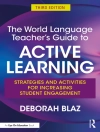This comprehensive guide provides an accessible introduction to the philosophy of restorative justice and its practical application in a wide range of settings, showing how it can help both victims and offenders when harm has been done.
Drawing on many years’ experience of working in victim support, probation, mediation and restorative practices, Marian Liebmann uses pertinent case examples to illustrate how restorative justice can be used effectively to work with crime and its effects. Also included are sections on confronting bullying in schools, dealing with sexual and racial violence, tackling antisocial behaviour and community reconciliation after war. Whether in the context of families, schools, communities, criminal justice or prisons, the author argues that restorative justice is a `seamless philosophy’ which can be applied flexibly to meet diverse needs. Liebmann provides an international outlook, examining how restorative justice is practised around the world, including traditional Maori and Aboriginal approaches.
Restorative Justice: How It Works is a key reference for magistrates, social workers, probation officers, Youth Offending Team workers, police, teachers and health professionals, as well as the lay reader.
Tabela de Conteúdo
Acknowledgements. Introduction. 1. What is Restorative Justice? 2. A Brief History of Restorative Justice. 3. Restorative Approaches Involving Victims and Offenders Separately. 4. Models of Restorative Justice Involving Victims and Offenders Together. 5. Restorative Approaches for the Early Years of Life 6. Restorative Approaches in Schools 7. Restorative Justice with Victims and Young Offenders in the UK. 8. Restorative Justice with Victims and Adult Offenders in the UK. 9. Restorative Justice in Prisons 1: Prisoners Making Amends.10. Restorative Justice in Prisons 2: Relationships in the Prison Community. 11. Restorative Justice Around the World. 12. Restorative Justice in Complex and Sensitive Cases. 13. Issues in Restorative Justice. 14. Research: A Selection. 15. Restorative Justice after Large-Scale Violence or Oppression. 16. Arts Approaches to Restorative Justice. Postscript: Growing Points. Appendix 1. Restorative Justice Consortium: Principles of Restorative Processes December (2004). Appendix 2. United Nations: Basic Principles on the Use of Restorative Justice Programmes in Criminal Matters (2002). Appendix 3. Glossary. Appendix 4. Further Reading/Resources in Restorative Justice. Appendix 5. Organisations and websites. Appendix 6. Index of case studies. Subject Index. Author Index.
Sobre o autor
Marian Liebmann has worked in education, art therapy, victim support and probation, and for seven years was director and projects adviser of Mediation UK. She has written and edited nine books in the fields of art therapy, mediation and conflict resolution, including Mediation in Context, Arts Approaches to Conflict, and Art Therapy with Offenders, also published by Jessica Kingsley Publishers. She currently divides her time between freelance restorative justice, mediation training and consultancy, art therapy and writing.









![Capa do Sarah B. B. (University of Central Florida, Orlando, FL, USA) Bush & Kristin L. L. (Bellarmine University, USA) Cook: Simplifying STEM [6-12] Capa do Sarah B. B. (University of Central Florida, Orlando, FL, USA) Bush & Kristin L. L. (Bellarmine University, USA) Cook: Simplifying STEM [6-12]](https://static.worldofdigitals.com/thumb_webp/414/9781071932414.webp)


